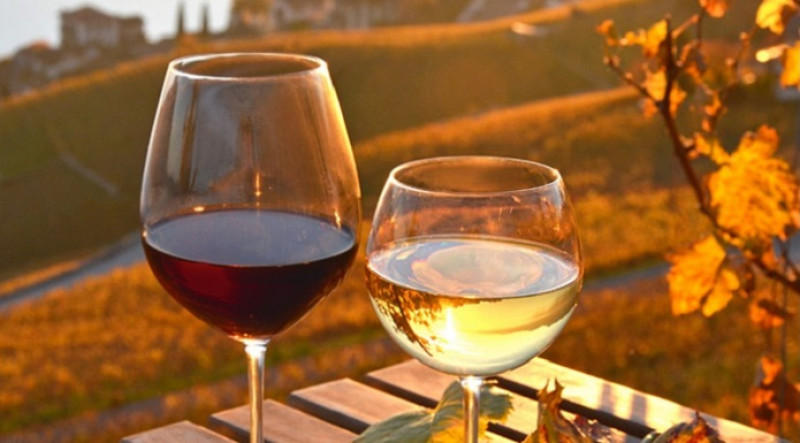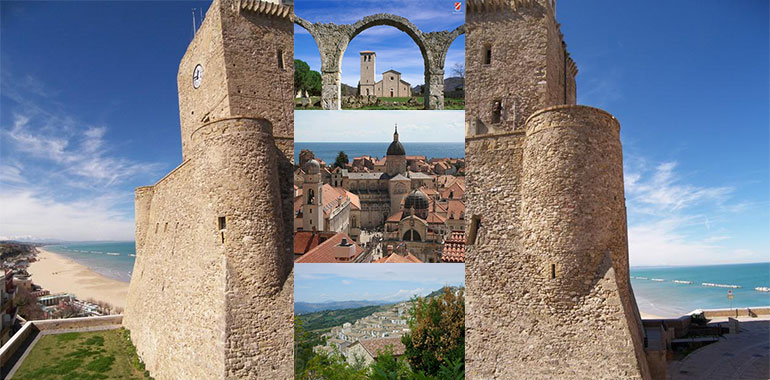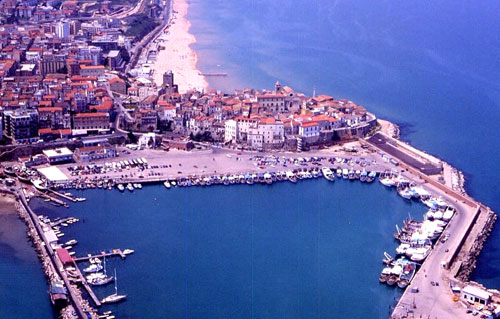Molise, is a region of Southern Italy. Until 1963, it formed part of the region of Abruzzi e Molise, alongside the region of Abruzzo. The split, which did not become effective until 1970, makes Molise the newest region in Italy.

State: Italy
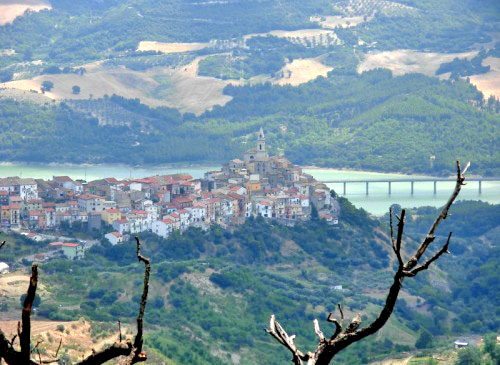
Capital: Campobasso
Region: Molise
Coordinate: 41°34′N 14°40′E
Area: 4.438 km²
Population: 319.780
Altitude: 631m above sea level
Density: 72,05/km²
Province: Campobasso e Isernia
Adjoining regions: Abruzzo, Campania, Lazio, Apulia
Municipalities: 136
The region covers 4,438 km² (the Aosta Valley is the only smaller region) and has a population of about 300,000.

The region is split into two provinces, named after their respective capitals Isernia and Campobasso. Campobasso also serves as the regional capital.

History
After the fall of the Roman Empire in 476 AD Molise was invaded by the Goths (535 AD) and then by the Languebards (or Lombards) in 572, and annexed to the Dukedom of Benevento. A very troubled period began with the invasions of the Saracens, that in 860 AD destroyed Isernia, Telese, Alife, Sepino, Boiano and Venafro. By the 10th century there were 9 countdoms: Venafro, Larino, Trivento, Bojano, Isernia, Campomarino, Termoli, Sangro, Pietrabbondante.
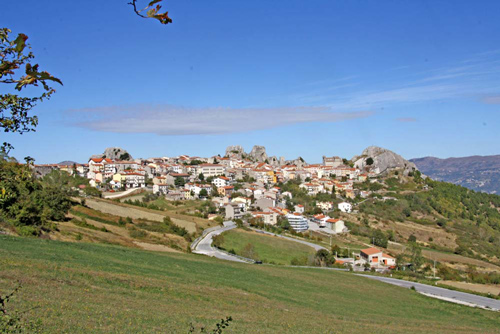
In 1095 the most powerful of them, Bojano, came under the rule of the Norman Hugo I of Molhouse, who most probably gave his name to the region; his successor Ugo II was Count of Molise in 1144. In the 16th century Molise was included to the Province of Capitanata (Apulia) and in 1806 became an autonomous Province, included in the Abruzzi region.
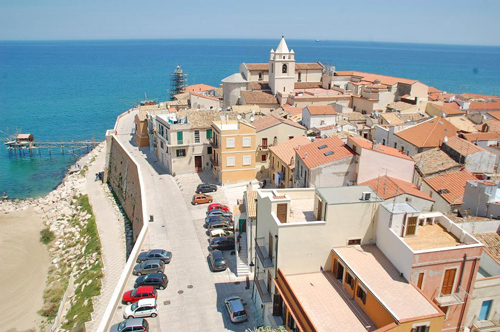
In the 19th century there was a general worsening of the economic conditions of the population, and this gave rise, under the newly established Kingdom of Italy (1861), to brigandage and a massive emigration not only abroad but also to more industrial Italian areas. A heavy destruction took place in WW2, until finally the Allied Forces were able to land at Termoli, in September 1943.
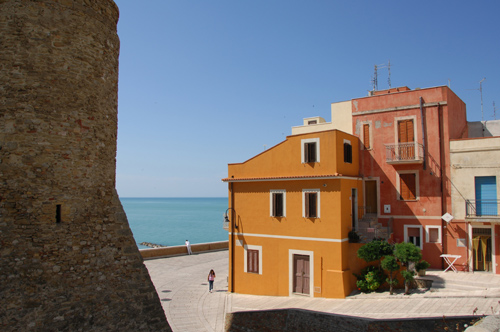
Geography
Molise is bordered by Abruzzo to the north, Apulia to the east, Lazio to the west and Campania to the south. It has a short coastline to the northeast, lying on the Adriatic Sea.
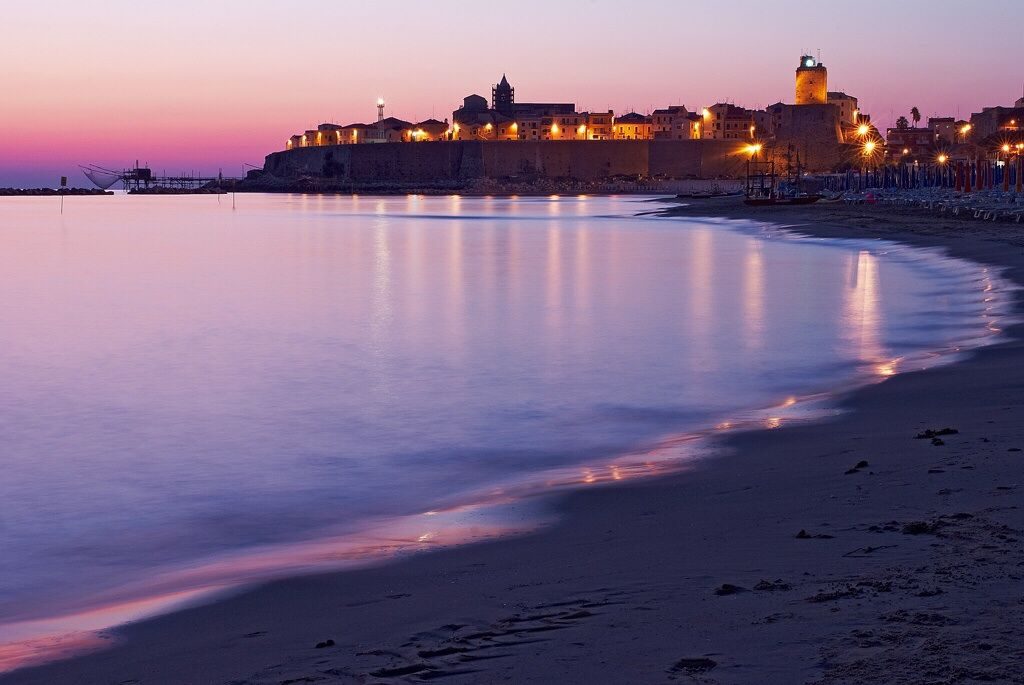
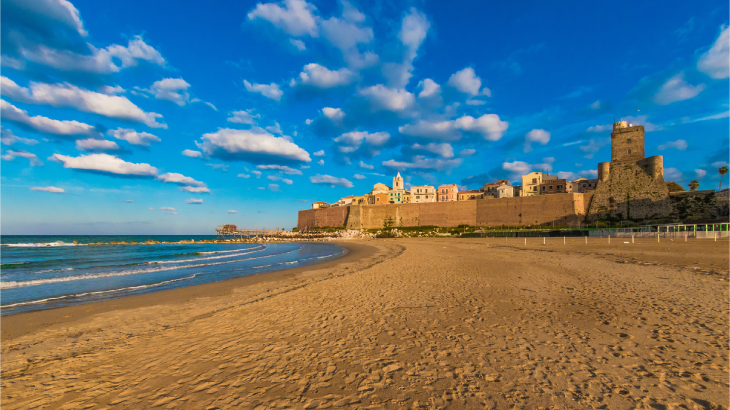
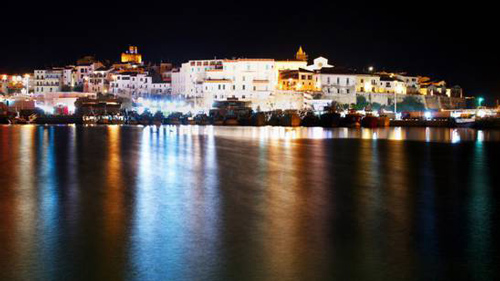

The lakes
The river Biferno has been blocked into a water reservoir in the 70s called the embankment dam of Liscione, this way the Lake of Guardialfiera has been formed which is the most expanded of the territory. Another most important lake is the lake of Occhito which goes along between Molise and Apulia for many kilometres. Moreover another artificial basin of Castel San Vincenzo arises between the Mainarde, which has been realised in the 50s. This one is belongs also to the National Park “Parco nazionale d’Abruzzo, Lazio e Molise”.
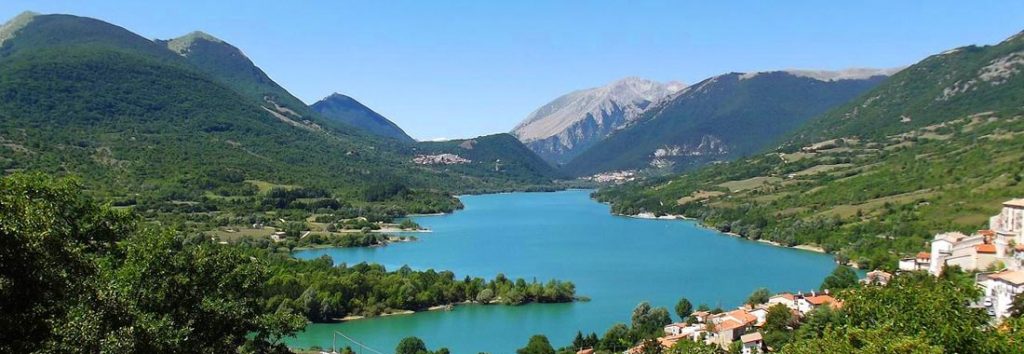
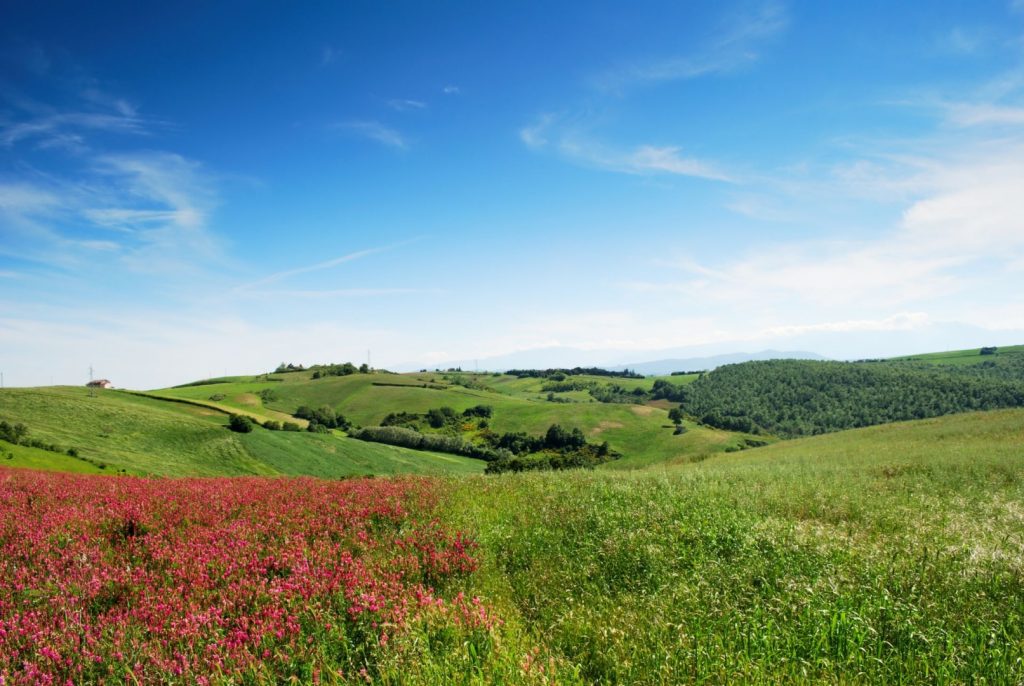
Economy
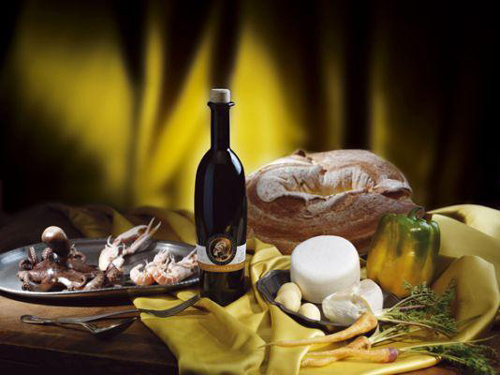
Agriculture, involving small and micro holdings, is currently offering high-quality products. The agricultural holdings produce wine, cereals, olive oil, vegetables, fruits and dairy products. Traditional products are Grass Pea (cicerchia) and Farro. Molise’s autochthonous grape is Tintilia which has been rediscovered during the last ten years.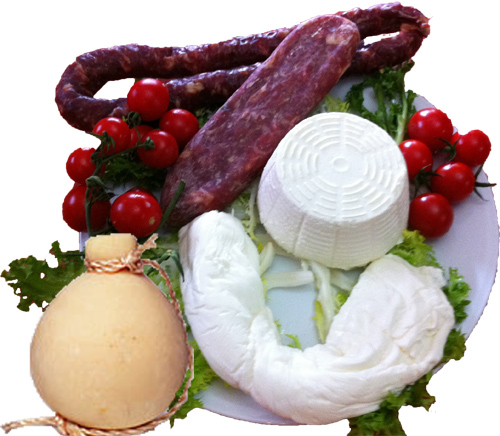
Though there is a large Fiat plant (Termoli), the industrial sector is dominated by the construction industry with small and medium-sized farms spread widely throughout the region. Another important industry is food processing: pasta, meat, milk products, oil and wine are the traditional products of the region. In the services sector the most important industries are distribution, hotels and catering, followed by transport and communications, banking and insurance. With few exceptions, in all sectors firms are small, and this explains the difficulties encountered when marketing products on a national scale.
After the earthquake of 2002 some of the communities in Molise adopted a policy which contributed state money to individuals willing to make their homes more resistant to seismic activity. Larino, near Termoli, was a particular beneficiary of this policy and the town, already one of the most beautiful in the province, has been transformed. It was policy to return the houses to their historical colours and, based on careful research, the structures were painted in a range of soft pastel tones.

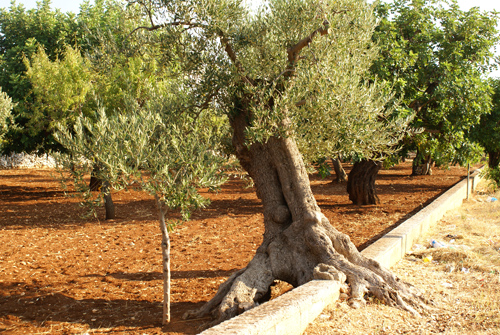
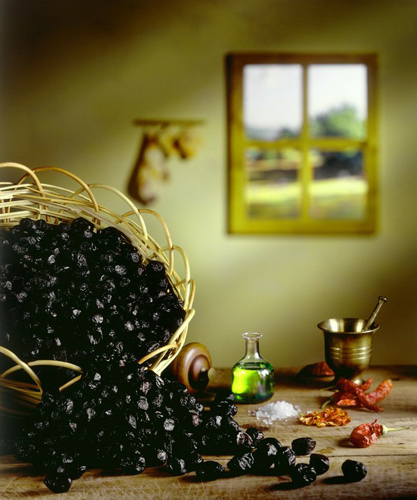
As a result Larino has become an important centre for tourism and scores of expatriates from all over the world are returning to live in the revived centro storico (antique centre). International tourism is becoming more evident largely as a result of the international flights from other European states, Great Britain, and North America which enter Pescara not far to the north in Abruzzo. The tourists are attracted by large expanses of unspoilt beaches, a relative lack of congestion, and the gentle pace of life.
Demographics
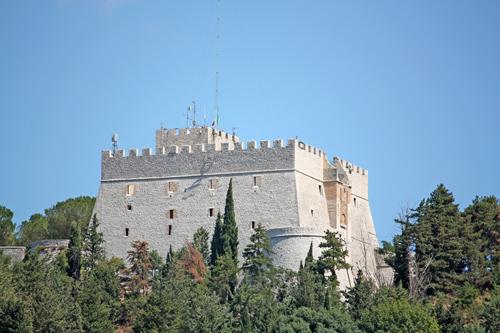
The density of the population in Molise is well below the national average. In 2008, Molise registered 72.3 inhabitants per km2, compared to a national figure of 198.8. The region is subdivided into two provinces: Campobasso and Isernia, covering together 1.5% of the Italian territory and less than 1% of its population. The larger province in terms of surface area is Campobasso (2,909 km2) and the smaller is Isernia (1,529 km2). The province of Campobasso is the more densely populated of the two provinces, with 79.4 inhabitants per km2, whereas Isernia registered 58.9 inhabitants per km2. At the end of 2008 the most populous towns were Campobasso (51,247 inhabitants), Termoli (32,420) and Isernia (21,811).

In the period 1951-71, large-scale emigration to other countries of the European Union, to other parts of Italy and overseas led to a significant decline in the population of Molise. Negative net migration persisted until 1981. Large-scale emigration has caused many of the smaller towns and villages to lose over 60% of their population, while only a small number of larger towns have recorded significant gains. From 1982 to 1994, net migration has been positive, then followed by a negative trend until 2001. Between 1991 (330,900 inhabitants) and 2001 (320,601 inhabitants), the population of the region decreased by 3.1%; since 2001 the population remained stable.
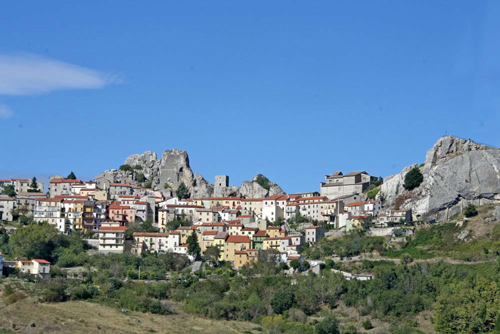
In the region there are two ethnic minorities: the Molisan Croats (5,000 people who speak an old Dalmatian dialect of the Croatian language) and the Molisan Albanians (who speak a divergent variety of Albanian, Arbëresh, very different from the Albanian spoken in Albania itself). Molisan Albanians are generally Eastern Orthodox, while Molise Croats are generally Catholics.
Province of Campobasso, Molise, Italy
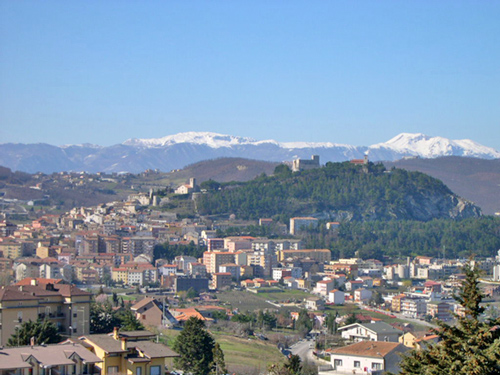
The Province of Campobasso is administratively divided into 84 Municipalities with a surface area of 2909 square km and a population, in the census of the year 2000, of about 235,000 inhabitants. The present territory of the Province was not the same as in past centuries.

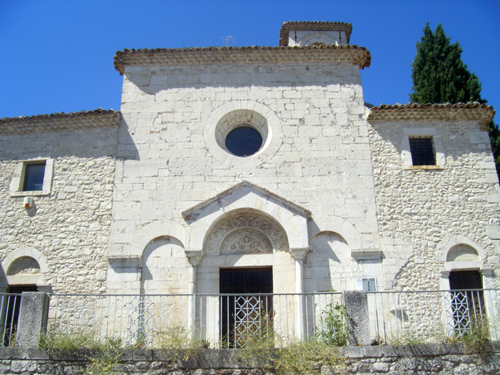
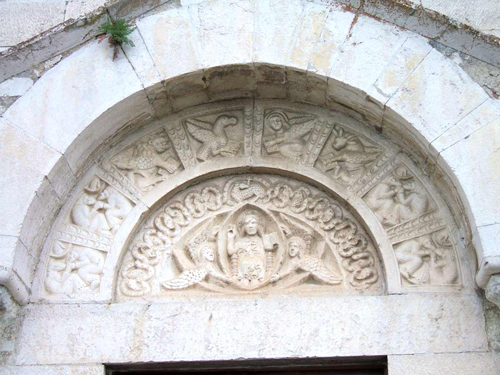
With the unity of Italy, in 1861, the borders of the whole Molise region were fixed along the Fortore and Volturno rivers and the region was united to Abruzzo for about a century. After the Second World War there was a strong movement to make the region autonomous, and in December 1964 a constitutional law established Molise as an independent region with one Province, and capital Campobasso. On 2 February 1970 52 municipalities of this Province were separated and a new Province, Isernia, was established.
Province of Isernia, Molise, Italy
All in the middle of the Appennine chain, between the Thyrrenian and the Adriatic but unconnected to the sea, the territory of the Province, where the most ancient presence of man in Europe was recorded, can offer important signs of the presence of many civilizations: pre-historic settlements, Samnite fortresses, Roman towns, imposing medieval castles, Romanesque and baroque churches, as well as a natural landscape that for the uniqueness of the vegetation and wildlife is now included in parks and natural reserves.
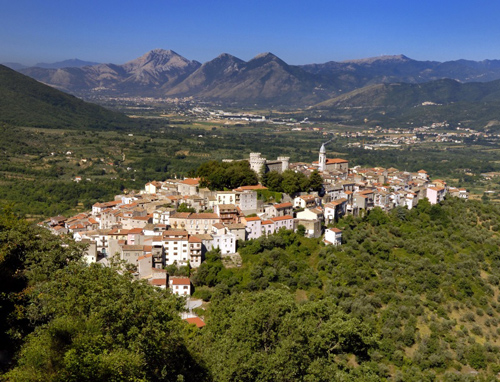
The territory has a rich heritage of the transhumance economy of past ages, when twice each year thousands and thousands of shepherds from Abruzzo and Molise traveled with millions of sheep down to the Apulian plains and then back to the mountain pastures: over 100 km of grass highways, 111 mt wide, crossing the landscape, and leaving their marks in the face of the land and the customs of the people. The Province of Isernia was established only in 1970 with 52 Municipalities previously belonging to the Province of Campobasso.
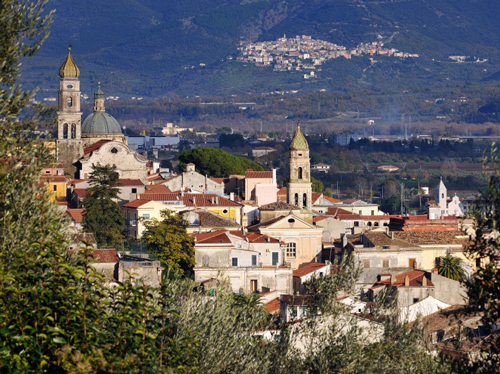
Cuisine
The cuisine of Molise is similar to the cuisine of Abruzzo, though there are some differences in the dishes and ingredients. The flavors of Molise are dominated by the many aromatic herbs that grow there. Some of the characteristic foods include spicy salami, a variety of locally produced cheeses, dishes using lamb or goat, pasta dishes with hearty sauces, and vegetables that grow in the region.
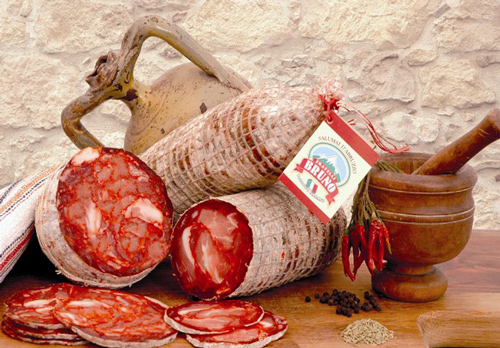
In addition to bruschetta, a typical antipasto will consist of any of several meat dishes, suuch as the sausages Capocolli, the fennel-seasoned Salsiccie al finocchio, Soppressata, ventricina , frascateglie or sanguinaccio. In addition to these sausages, a variety of ham is available, such as smoked prosciutto. Frequently, the sausages are enjoyed with polenta.
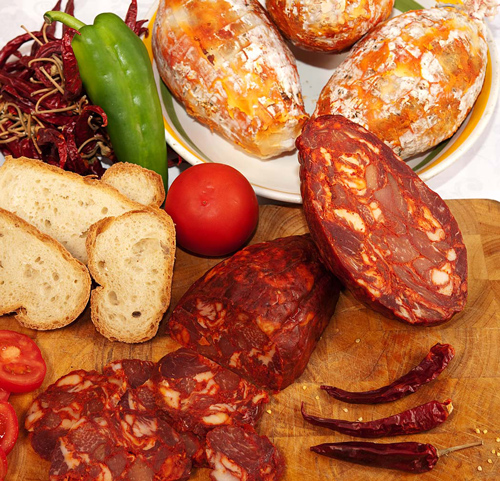
Main dishes of the region include:
• Brodosini made of tagliatelle in broth with pork cheek and fat;
• Calcioni di ricotta, a specialty of Campobasso, made of fried pasta stuffed with ricotta, provolone, prosciutto, and parsley, and usually served with fried artichokes, cauliflower, brains, sweetbread, potato croquette, and scamorza cheese;
• Cavatiegl e Patane, or gnocchi served in a meat sauce of rabbit and pork;
• A variety of Pasta, such as Cavatelli, Lasagna, or maccheroni served with a ragù of lamb or goat;
• Pasta e fagioli, Pasta-and-white-bean soup cooked with pig’s feet and pork rinds;
• Polenta d’iragn, a polenta-like dish actually made of wheat and potatoes, sauced with raw tomatoes and pecorino;
• Risotto alla marinara, a risotto with seafood;
• Spaghetti with diavolillo, a strong chili pepper sauce;
• Zuppa di cardi, a soup of cardoons, tomatoes, onions, pancetta, olive oil;
• Zuppa di ortiche, a soup of nettle stems, tomatoes, onions, pancetta, olive oil.
Common second dishes (often meat and vegetable dishes) are:
• Lamb, the most popular meat, served grilled, roasted, or stewed;
• Many organ meats of lamb, especially tripe, are popular;
• Coniglio alla molisana, grilled rabbit pieces skewered with sausage and herbs;
• Mazzarelle, tightly wrapped rolls made with lung and tripe of lamb;
• Ragù d’ agnello,braised lamb with sweet peppers, a specialty of Isernia;
• Torcinelli, rolled strips of lamb tripe, sweetbreads, and liver;
• Pamparella or pork pancetta dried with peperoncino, soaked in wine and cut into small pieces. Pamparella is used to flavor sauces, in particular the sauce for dressing the tacconi, a rustic pasta made with flour and water.

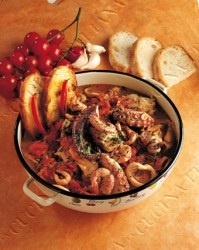
Typical vegetable dishes may include:
• Carciofi ripieni, artichokes stuffed with anchovies and capers;
• Peeled sweet peppers stuffed with breadcrumbs, anchovies, parsley, basil and peperoncino, sautéed in a frying pan and cooked with chopped tomatoes;
• Cipollacci con pecorino, fried strong onions and pecorino cheese;
• Frittata con basilico e cipolle, omelette with basil and onions.
Fish dishes include red mullet soup, and spaghetti with cuttlefish. Trout from the Biferno river is notable for its flavor, and is cooked with a simple but tasty sauce of aromatic herbs.
And finally Zuppa di pesce, a fish stew, a specialty of Termoli.
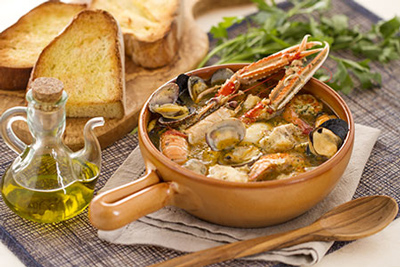

The cheeses produced in Molise are not very different from those produced in Abruzzo. The more common ones are Burrino and Manteca, soft, delicious, buttery cow’s-milk cheeses, Pecorino, sheep’s-milk cheese, served young and soft or aged and hard, Scamorza, bland cow’s-milk cheese, often served grilled, and Caciocavallo, sheep’s-milk cheese.
Sweets and desserts have an ancient tradition here and are linked to the history of the territory and to religious and family festivities. Most common are:
• Calciumi (also called Caucioni or cauciuni), sweet ravioli filled with chestnuts, almonds, chocolate, vanilla, cooked wine musts, and cinnamon and then fried;
• Ciambelline, ring-shaped cakes made in the countryside. They may be all’olio (with olive oil) or al vino rosso (with red wine);
• Ferratelle all’anice, anise cakes made in metal molds and stamped with special patterns;
• Ricotta pizza, a cake pan filled with a blend of ricotta cheese, sugar, flour, butter, maraschino liqueur, and chocolate chips.
Local wines particularly Biferno and Pentro are excellent.
Among the typical desserts of Molise, top place goes to mostarda d’uva (jam made with grapes from the Molise countryside); then cauciuni (pastry filled with chickpeas), ostie farcite (wafers filled with walnuts and almonds), peccellate (pastry filled with grape syrup or jams) and cippillati (baked ravioli filled with sour black cherries) are the best way to end a good meal.
